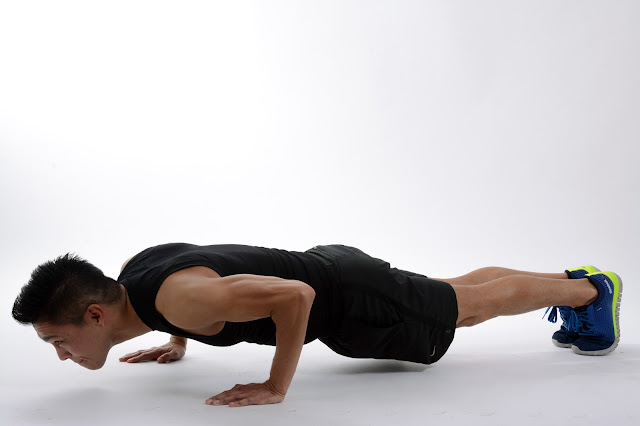Straight Sets vs Pyramid Sets
Q: I've been reading a lot of discussions about straight sets over pyramid sets. They both seem to have lots of benefits, but is there a superior system in the two? I've noticed a trend that advanced lifters use more pyramid sets (flat pyramids, which was discussed on the blog) with multi-joint lifts. Does this have to do with recovery?
My Answer: Very simple: it doesn't make a difference.

For those of you who don't know, pyramid sets are when you increase the weight for an exercise from set to set until you hit your max weight. The Hypertrophy Training for the Ectomorph program is an example of pyramid sets:
Set 1- 10 reps
Set 2- 8 reps
Set 3- 6 reps
Set 4- 15 reps
"Straight sets" are when you maintain the same weight and/or reps throughout all the sets for an exercise, such as 5x5.
Now what are the advantages and disadvantages of each system? Pyramid sets allow you to warm-up before you hit your max weight. Pyramid sets are better for beginners or when you're trying a new exercise. If you're new to weight training, then you need to develop neuromuscular coordination through repetition. You can't jump directly to your heavy weight, because you haven't developed those neuromuscular connections for the exercise.
The problem with pyramid sets is that you don't obey the Law of Repeated Effort. In other words, you're not hitting each motor unit with enough repetition to force those fibers to hypertrophy. So for the 10-8-6-15 rep scheme, you're literally doing one set for each of four different rep ranges.
This is where straight sets beat pyramid sets. With 5x5 for example, you're hitting the 5 rep range repeatedly (5 times). The repeated effort in this target rep range hypertrophies the fibers for that motor unit.
The problem with straight sets is that you can only focus on one motor unit at a time. So if you kept doing 5 reps, then you'd build the fibers of that motor unit, but you're not building up the fibers of low threshold motor units.
To fully develop all of your muscle fibers, you have to hit different rep ranges with enough repeated effort. There are 2 ways to do this: do heavy/light sets or cycle your repetitions from workout to workout.
With the heavy/light method, it's very simple: do straight sets of heavy weight, low rep and then follow up with straight sets of high reps, light weight. A series of heavy/light straight sets would look something like this:
4 sets of 6 reps
3 sets of 12 reps
Cycling your repetitions would look like this:
Workout #1- 3 sets of 12
Workout #2- 4 sets of 5
Workout #3- 2 sets of 20
My Answer: Very simple: it doesn't make a difference.

For those of you who don't know, pyramid sets are when you increase the weight for an exercise from set to set until you hit your max weight. The Hypertrophy Training for the Ectomorph program is an example of pyramid sets:
Set 1- 10 reps
Set 2- 8 reps
Set 3- 6 reps
Set 4- 15 reps
"Straight sets" are when you maintain the same weight and/or reps throughout all the sets for an exercise, such as 5x5.
Now what are the advantages and disadvantages of each system? Pyramid sets allow you to warm-up before you hit your max weight. Pyramid sets are better for beginners or when you're trying a new exercise. If you're new to weight training, then you need to develop neuromuscular coordination through repetition. You can't jump directly to your heavy weight, because you haven't developed those neuromuscular connections for the exercise.
The problem with pyramid sets is that you don't obey the Law of Repeated Effort. In other words, you're not hitting each motor unit with enough repetition to force those fibers to hypertrophy. So for the 10-8-6-15 rep scheme, you're literally doing one set for each of four different rep ranges.
This is where straight sets beat pyramid sets. With 5x5 for example, you're hitting the 5 rep range repeatedly (5 times). The repeated effort in this target rep range hypertrophies the fibers for that motor unit.
The problem with straight sets is that you can only focus on one motor unit at a time. So if you kept doing 5 reps, then you'd build the fibers of that motor unit, but you're not building up the fibers of low threshold motor units.
To fully develop all of your muscle fibers, you have to hit different rep ranges with enough repeated effort. There are 2 ways to do this: do heavy/light sets or cycle your repetitions from workout to workout.
With the heavy/light method, it's very simple: do straight sets of heavy weight, low rep and then follow up with straight sets of high reps, light weight. A series of heavy/light straight sets would look something like this:
4 sets of 6 reps
3 sets of 12 reps
Cycling your repetitions would look like this:
Workout #1- 3 sets of 12
Workout #2- 4 sets of 5
Workout #3- 2 sets of 20
Cycling your repetitions is better for muscle growth, because it allows you to train muscle groups frequently. Your body likes to focus on one intensity zone at a time, as opposed to being battered by every rep range and numerous exercises all in one workout.

Comments